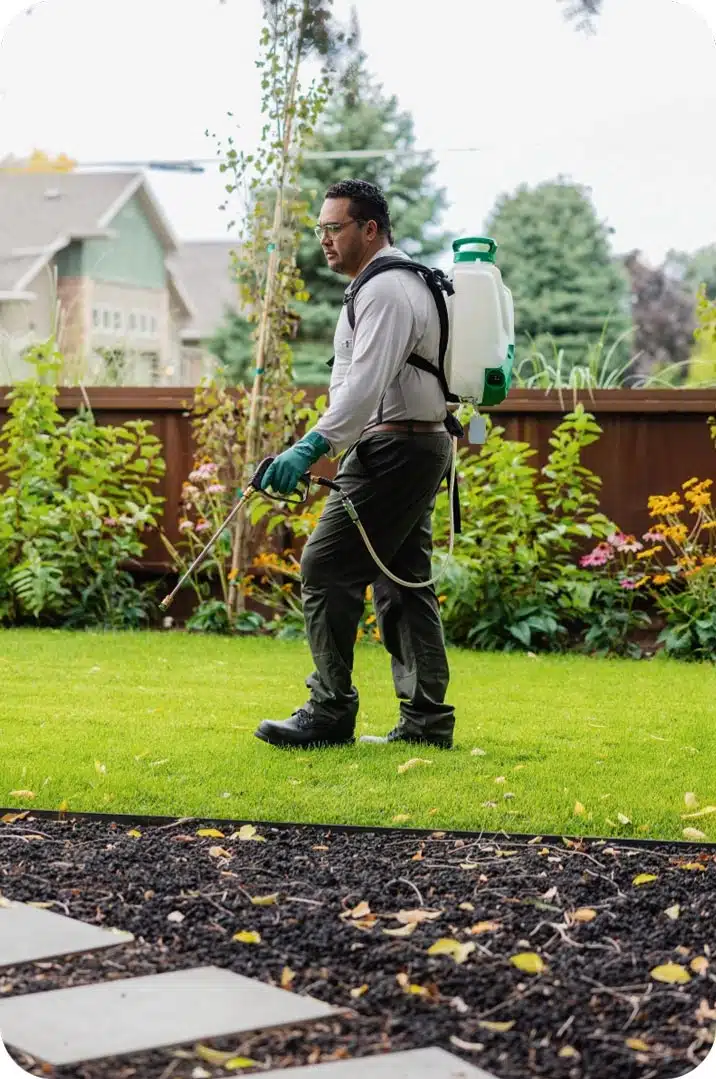Experienced A1 Exterminators Charlotte NC - Fast and Trusted Solutions
Experienced A1 Exterminators Charlotte NC - Fast and Trusted Solutions
Blog Article
Bed Bug Treatment Failure: Comparing Chemical Vs. Non-Chemical Solutions
In the realm of parasite control, especially when handling the relentless problem of bed pests, the selection between chemical and non-chemical therapy remedies can be a critical one. Both strategies offer distinct advantages and disadvantages, affecting elements such as performance, safety and security considerations, and overall cost. By analyzing the nuanced details of each method, a more clear understanding of which course to go after in attending to a bed insect problem can be obtained.
Performance of Chemical Treatments
Chemical therapies for bed pest invasions have actually been commonly acknowledged for their rapid and potent efficiency in eradicating these pests. When considering the effectiveness of chemical treatments, it is critical to understand that they can give a complete and fast service to a bed bug trouble.
Additionally, chemical therapies have the advantage of using recurring results, indicating that they can continue to remove bed bugs also after the initial application. This recurring action is specifically helpful in combating any potential re-infestations. In addition, the rapid activity of chemical treatments can bring relief to people facing extreme bed insect invasions, allowing them to reclaim control of their home promptly.
Security Issues With Chemical Solutions
One critical aspect that requires cautious factor to consider when using chemical services for bed bug treatment is making sure the safety and security of occupants and the environment. Exposure to particular chemicals used in bed insect treatments can lead to respiratory system concerns, skin irritation, or various other damaging responses, especially in individuals with pre-existing problems or sensitivities.
Moreover, the environmental influence of chemical options is one more substantial factor to consider. Some pesticides utilized in bed insect treatments might be dangerous to helpful insects, wild animals, and ecological communities if they seep right into the dirt or water systems. It is necessary to make use of chemical treatments judiciously, adhering to safety guidelines, and considering much less toxic choices to minimize these dangers and ensure the reliable and secure monitoring of bed bug invasions.
Advantages of Non-Chemical Approaches
Thinking about the possible safety concerns and environmental effect associated with chemical services for bed pest therapy, checking out non-chemical techniques provides an encouraging choice with several distinct advantages. Non-chemical therapies are environmentally friendly, as they do not contribute to air or water air pollution, making them a lasting option for pest control.
In addition, non-chemical remedies can be reliable in targeting bed bugs, consisting of hard-to-reach locations where chemical treatments might not pass through - A1 bed anchor bug exterminator charlotte. Techniques such as warm therapy, vacuuming, steam cleaning, and bed mattress encasements supply thorough elimination without the usage of hazardous chemicals.
Limitations of Non-Chemical Treatments

In addition, non-chemical treatments commonly require numerous applications to accomplish effective removal. This can be taxing and might not constantly ensure complete removal of all bed pests and their eggs, especially in hard-to-reach or covert areas.
In addition, the success of non-chemical therapies greatly depends on appropriate execution and thoroughness, which can be challenging for individuals without professional competence. Poor application of non-chemical techniques might lead to insufficient eradication, resulting in consistent problems helpful hints and the demand for added therapies.
For that reason, while non-chemical treatments have their advantages, it is necessary to recognize these limitations and consider them when identifying one of the most reliable method for handling bed pest invasions.
Price Comparison: Chemical Vs. Non-Chemical Options
Given the restrictions connected with non-chemical therapies, an important aspect to examine in the context of bed insect monitoring is the price contrast between chemical and non-chemical options. Chemical treatments commonly include the application of insecticides by specialists, which can vary from $250 to $900 per space, depending upon the seriousness of the infestation and the dimension of the location to be treated. In contrast, non-chemical therapies like warmth therapy or heavy steam can be a lot more costly, with expenses varying from $1,000 to $6,000 for an entire home. While the first cost of chemical treatments may appear reduced, several treatments might be required to completely eradicate the invasion, possibly increasing the general price. On the other hand, non-chemical alternatives may give a more eco-friendly and sustainable remedy, although they can be cost-prohibitive for some individuals. Ultimately, when considering the cost of bed bug treatment alternatives, it is essential to evaluate the in advance expenditures against the performance and long-term sustainability of the selected approach.
Verdict

Taking into consideration the potential security concerns and environmental effect linked with chemical services for bed pest treatment, discovering non-chemical approaches offers a promising choice with a number of distinct benefits.Offered the constraints linked with non-chemical therapies, an important aspect to evaluate in the context of bed insect management is the price contrast in between chemical and non-chemical choices. In comparison, non-chemical therapies like warmth therapy or vapor can be more expensive, with expenses varying from $1,000 to $6,000 for a whole home. While the initial cost of chemical therapies might seem reduced, numerous therapies may be required to read here fully eradicate the infestation, potentially boosting the general expense.In conclusion, when contrasting chemical and non-chemical bed pest treatment choices, it is crucial to take into consideration efficiency, safety, advantages, restrictions, and price.
Report this page